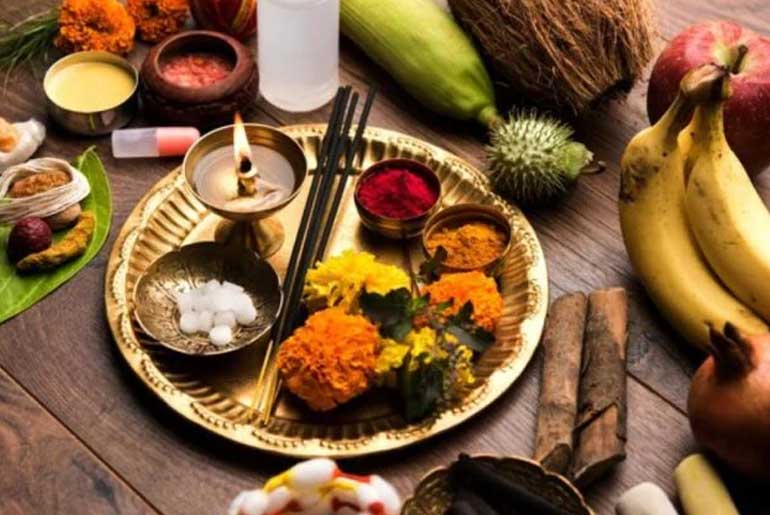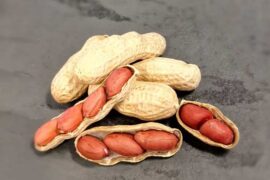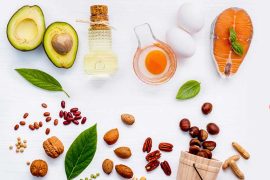During Chaitra Navratri fasting, which begins on April 9th, it’s crucial to focus on consuming hydrating and nutritious foods while avoiding those that drain your energy. This nine-day fasting period is a time for detoxification, worshiping Maa Durga, engaging in spiritual reflection, and revitalizing both the body and mind. The Navratri diet typically includes vrat-friendly grains, hydrating vegetables and fruits, nuts, seeds, and millets, all of which are rich in nutrients and nourish the body when consumed in moderation and prepared in a healthy manner. However, it’s important to steer clear of deep-fried foods and overindulgence in even satvik foods, as these can lead to weight gain, spikes in blood sugar levels, and exacerbation of symptoms related to chronic health issues. Therefore, maintaining balance and moderation in food choices during Navratri fasting is essential for overall well-being.
Maintaining a balanced diet during Navratri is crucial, ensuring the inclusion of all essential food groups such as high-protein foods, complex carbohydrates, fiber, vitamins, and minerals. Neglecting to drink enough water, incorporate fiber into your diet, or consume hydrating foods can lead to digestive issues ranging from constipation to bloating. Fortunately, there are numerous vrat-friendly foods available that can fulfill your daily nutritional requirements. For instance, foods like milk, paneer, kuttu atta, nuts, seeds, and amaranth are excellent sources of protein, while curd and buttermilk play a vital role in promoting digestive health. Additionally, fruits and vegetables are essential dietary additions, providing much-needed antioxidants and vitamins to support overall well-being during Navratri fasting. By incorporating a variety of nutritious foods into your diet, you can ensure that your body receives the essential nutrients it needs to thrive throughout the fasting period.
Nutritious Options for Fasting:
Hydrating fruits and veggies:
- Oranges, grapes, watermelon, muskmelon, cucumber, and tomatoes are excellent choices.
- They provide hydration, fiber, vitamins, and minerals, supporting immunity and boosting energy levels.
High-protein foods:
- Including protein-rich foods such as milk, paneer (cottage cheese), kuttu atta (buckwheat flour), and amaranth is beneficial.
- These foods offer sustained energy and help in satiety, keeping you full for longer during the fast.
Probiotics like buttermilk and curd:
- Probiotic-rich foods like buttermilk and curd support gut health and boost the immune system.
- They can enhance energy levels and mood during fasting periods.
Millets:
- Buckwheat, barnyard millet, foxtail millet, and little millet are nutritious options.
- They provide essential nutrients, increase energy levels, and can aid in weight management.
- Avoid consuming them in deep-fried forms to maintain their nutritional value.
Potatoes, bottle gourd, pumpkin:
- Opt for light and easily digestible vegetables like potatoes, bottle gourd, and pumpkin during fasting.
- These vegetables support detoxification and rejuvenation, offering fiber and essential nutrients.
Makhana and peanut:
- Makhana (fox nuts) is rich in calcium, magnesium, phosphorus, and potassium.
- Peanuts provide vitamins and minerals like copper, niacin, folate, and manganese.
- Snacking on makhana and peanuts helps in managing hunger pangs and provides essential nutrients.
Incorporating these foods into one’s fasting diet can ensure a balanced intake of nutrients, sustained energy levels, and support overall well-being during Chaitra Navratri and similar fasting periods. It’s essential to maintain hydration and choose nutrient-dense foods to meet dietary needs during fasting.
Foods to Avoid:
Onion and Garlic:
- Considered tamasic in nature, onion, and garlic are avoided by many individuals during Navratri fasting.
- They are omitted from tempering and salads to maintain the purity of the diet during this period.
Grains and Cereals:
- Traditional grains like rice, wheat, and lentils are abstained from during Navratri fasting.
- Alternatives such as samak ke chawal (barnyard millet), kuttu ki roti (buckwheat flatbread), and amaranth and water chestnut flour are commonly consumed.
Non-Vegetarian Foods:
- Non-vegetarian foods like chicken and mutton are considered tamasic and are strictly avoided during Navratri fasting, even by those who don’t observe the fast.
Processed or Deep-Fried Food:
- Deep-fried foods like kuttu ki puri (buckwheat puris) and singhare ke pakore (water chestnut flour fritters) are popular during Navratri.
- However, excessive consumption can lead to digestive issues such as acidity and constipation, contradicting the detoxification aims of fasting.
Table Salt:
- Refined table salt is typically replaced with sendha namak (rock salt) during Navratri fasting.
- Some individuals may choose to omit salt altogether during this period.
Observing these dietary restrictions during Navratri fasting is believed to promote spiritual purification, maintain purity, and support overall well-being. By adhering to these guidelines, individuals aim to cultivate discipline and enhance their connection with the divine during this auspicious time.
Disclaimer:
The information contained in this article is for educational and informational purposes only and is not intended as a health advice. We would ask you to consult a qualified professional or medical expert to gain additional knowledge before you choose to consume any product or perform any exercise.







